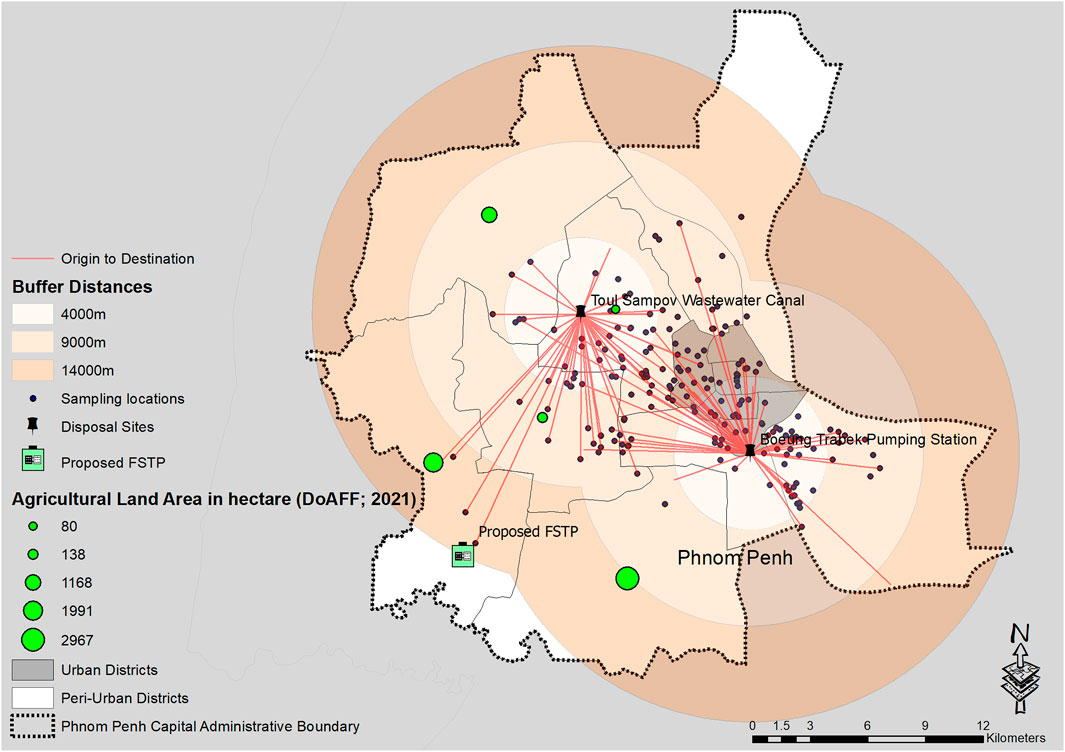At the current progress rate, there will probably still be 2.8 billion people world-wide without safely managed sanitation by 2030. Faecal sludge treatment is crucial for safely managed sanitation. To incentivize and increase implementation of sustainable faecal sludge management (FSM), especially in the cities of low and middle-income countries like Phnom Penh, Cambodia, there should be radial shift in viewing human waste as a resource. However, planning data, e.g. on qualities, quantities and fate of faecal sludge after leaving households are, inadequate and lack of accuracy. This study aimed to provide baseline data for effective FSM planning by sanitation stakeholders in Phnom Penh. This was done by characterizing the physical and chemical properties of faecal sludge in Phnom Penh, identifying sources of variation in faecal sludge composition, quantifying sludge volomes generated, transport logistics and resoruce recovery potential to incentivize sustainable management. In total, 194 faecal sludge samples collected during containment unit emptying were analyzed for physicochemical parameters. Interviews were conducted with users and emptying and transportation contractors, together with collection of technical data about on-site sanitation systems. Geographical coordinates of household sampling locations and disposal sites were also mapped.
The results showed that the concentation of many faecal sludge parameters such as nutrients and organic matter are at the lower end of the range reported for other similar cities worldwide, but still higher than the permissible Cambodian wastewater discharge level. The three predictors influencing faecal sludge characteristics included the addition of water during emptying, connection to the urban drainage network and the type of wastewater captured by household containment system. Cheung Ek and Kob Srov wetlands are the main recipients of faecal sludge collected in Phnom Penh with the amount of 18,800m3 and 13,700m3 annually (Figure 1), respectively. The analysis showed that faecal sludge in Phnom Penh contains valuable resources such as nitrogen (6 tons), phosphorus (13 tons) and energy (148-165 GWh) annually. The baseline data would be useful inputs for decision makers and planners in developing action plan for FSM in Phnom Penh and similar cities.

Read the whole papers:
Eliyan, C., Vinnerås, B., Zurbrügg, C., Koottatep, T., Sothea, K., and McConville, J. (2022). Factors Influencing Physicochemical Characteristics of Faecal Sludge in Phnom Penh, Cambodia. J. Water Sanitation Hyg. Development. 12 (1), 129–140. doi:10.2166/washdev.2021.193
Eliyan C, McConville JR, Zurbrügg C, Koottatep T, Sothea K and Vinnerås B (2022) Generation and Management of Faecal Sludge Quantities and Potential for Resource Recovery in Phnom Penh, Cambodia. Front. Environ. Sci. 10:869009.
doi: 10.3389/fenvs.2022.869009
